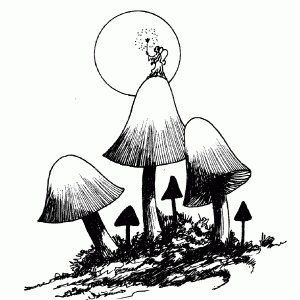The Artistic Approach to Riddles
By Justin James Zablocki – 2013
What has teeth but cannot eat? What turns but never moves? What has eyes but cannot see? What lock is there no key can open? We hear riddles like these all of the time and most of us are familiar with them. Even though they aren’t new to us we are still very fascinated by them and we see them in popular culture all the time. This is because when it comes to riddles, there’s more than meets the eye. Behind the few lines of text that they are composed of riddles are complex linguistic structures that can reveal a lot about language and art in the culture in which they exist.
Riddles can be read and answered but they are more effective and artistic when performed or said out loud. Riddles work within the cultural and linguistic rules that they exist in, making it an art of assumptions. These assumptions begin with performance. Since the person asking the riddle knows the answer they naturally put emphasis on all of the words in the riddle that are relevant culturally to the answer. This is a part of the encoding that goes into the riddle. The contents of the riddle itself is also very important to the cultural and artistic aspects of the riddle. The solution to the riddle is generally something that most people of the time and culture can relate to. This is made apparent by the survival of ‘Why did the chicken cross the road?” and the death of many riddles relating to things such as iron ore that no longer are relevant to most people’s lives. The same rule applies to the riddle itself; all of the clues must hold cultural relevance to ensure that most people will understand the references, otherwise it won’t be popular. Riddles can demonstrates a lot about language when their word choice and sentence structure is observed.
Here is an example riddle: “I live off of a busy street, if you want you can stay for an hour or two, but if you don’t pay rent I’ll tell on you”. The answer to this riddle is a parking meter. The performance of this riddle would reveal a lot about the cultural relevance of the riddle. Usually when this riddle is told the words that are most heavily emphasized are off, two, rent and you. In our culture when somebody says they live off of a street they usually mean they live on a street that connects to the original street. But in this case it literally means off of it. By putting emphasize on off it implies that there is some veiled meaning to the word that is out of the ordinary, and there is. Rent is another word with veiled meaning that is emphasized. Similarly, the answer to the riddle has cultural relevance. The riddle is very specific to our era since almost everyone has used a parking meter and they are a relatively new invention.
These conditions make riddles an art, an art that has been partaken in by Albert Einstein, William Shakespeare, and J.R.R. Tolkien. These great pieces or art should be treasured.
For some good riddles visit Good Riddles Now.
This article was used as a reference.
Article Source: https://EzineArticles.com/expert/Justin_James_Zablocki/1635976
